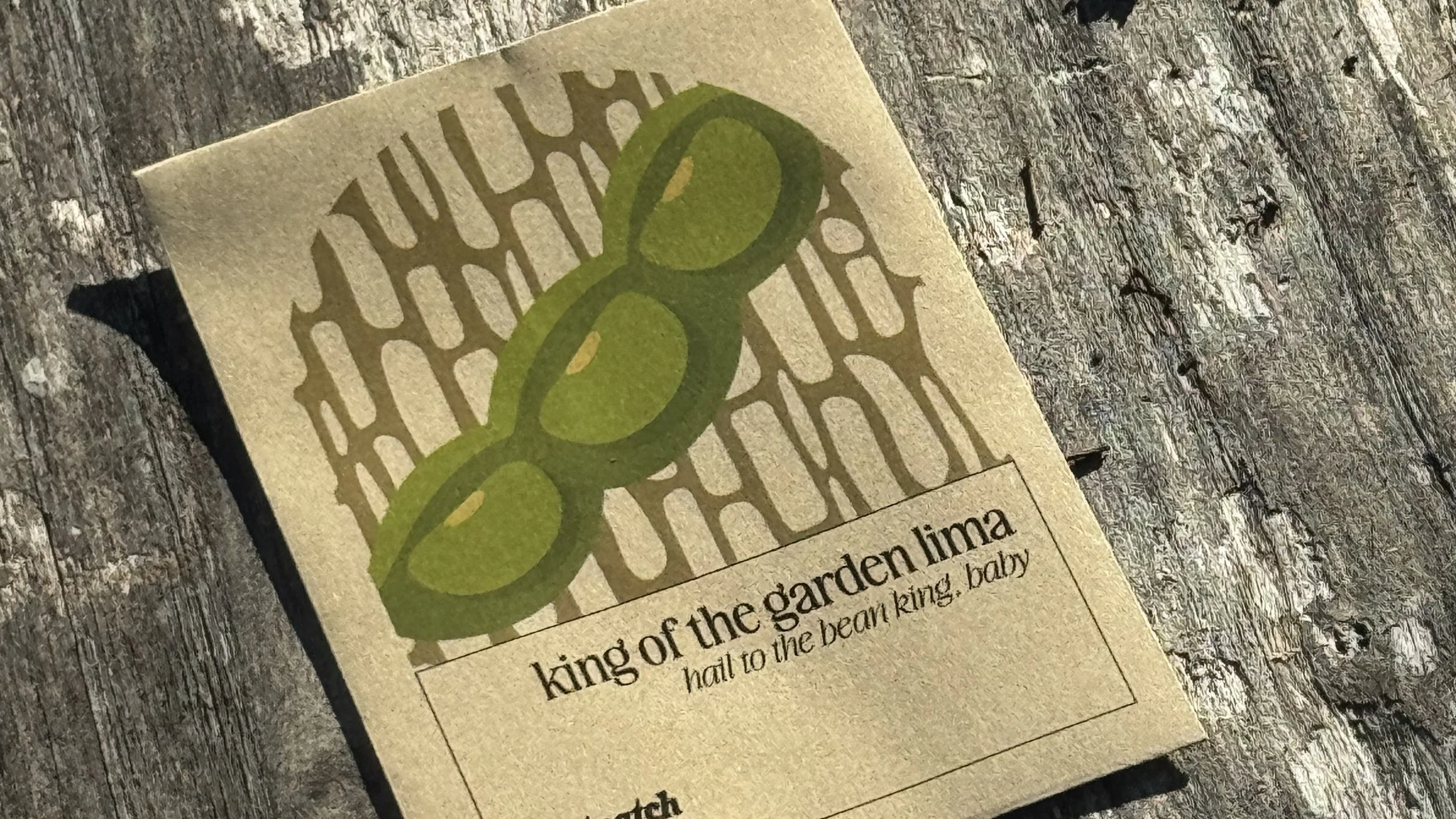Which sowing method should I use?
You got some seeds, so what now? Time to plant! You’ve got two classic routes from packet to plate: direct sowing or transplanting. Both methods work, but each fits different plants and goals. Direct sowing means you simply put seed into the soil where the plant will grow. Transplanting means you start seeds in pots (or buy young plants), grow them indoors or in a nursery, then plant them in the garden later. You'll likely end up using both approaches, but the trick is matching the method to the plant’s personality.
Direct sowing
With direct sowing, you channel your inner minimalist. No pots, no lights, no trays. Just you, your seeds, and the soil. Scratch a shallow hole or trench, tuck the seeds in, cover with soil, and keep everything moist. This approach is ideal for things that grow fast or have intense root systems that don’t like being disturbed. For example, carrots absolutely insist on direct sowing because their long taproots need to be undisturbed to grow straight. Disturb them and you’ll end up with seriously gnarly, curly roots. Speedy spring crops like radishes, spinach, lettuce also love the direct method. Because these seeds never endure a moving day, they skip transplant shock, often beating their pot-raised cousins to harvest by a week or more (assuming you stay on top of watering and evicting weeds).
Pros
Less transplant shock, stronger roots. Seeds sprout where they’ll end up growing, so their roots grow straight and deep without ever being disturbed or cramped in a starter environment. For crops that have sensitive root systems, the shock of transplanting can be problematic, but direct sowing doesn’t have any issues with that.
Simpler setup. There’s no need for pots, cups, trays, snails, and so on, and there’s no need for all the extra steps. Seed to soil to crop with nothing in between!
Tougher seedlings. Since they’re exposed to their growing conditions from the get go, there’s no need to harden off or worry as much about them surviving as they continue to grow.
Cons
Uneven germination. Seeds usually don’t have a 100% germination rate, so direct sowing can sometimes lead to gaps and wasted space in the garden if there is less-than-perfect germination.
More exposure. Seedlings emerge right alongside weeds and are easy targets for slugs, birds, and insects.
Unpredictability. A heavy rain or cold snap can wash away, rot, or smother freshly sown seeds before they ever sprout or take them out after they’ve barely sprouted.
Transplant
Transplanting, on the other hand, is more like seedling daycare. Essentially, you start seeds (or nursery starts) indoors or in a shaded area in some sort of container (usually a pot or growing tray). You'll give them enough light/sun, steady warmth, and a daily sip of water until they're grown enough to go out into the world of your garden. For colder regions (i.e, not Florida), this approach is essential for tender plants like tomatoes, peppers, and eggplants, which don't do well in a chilly climate. Starting them before the warm weather will let you take full advantage of the growing season rather than hoping they get through their growing cycle before the good weather gives out. But even in hotter areas, starting seeds indoors or in shade can help them bear the heat until they're more established or let you take advantage of the spring time warmth before the scorching summer heat sets in.
Once your seedlings sport a few true leaves, you'll need to begin hardening them off. That is, letting them spend longer and longer field trip hours outside so they can toughen up to real sunlight and wind. Once they seem to be weathering their eventual climate well, you'll dig their new homes, tip them from their pots with a gentle hand, and settle them into the garden.
Pros
Outsmart the climate. You can start things earlier than normal while waiting for the soil to warm up after the winter, or on the flip side, you can strengthen seedlings that would otherwise roast in the sun until they’re established enough to withstand it.
Controlled early environment. You can more easily control pests, moisture, light, and so on so your seedlings have a much higher chance of success overall.
Better use of space. Since you’ll be transplanting more established seedlings, you don’t have to worry about poor germination leaving gaps or needing to thin thriving crops.
Cons
Transplant shock. Moving seedlings into the garden can disturb root systems and cause other issues (e.g., nutrient imbalances) due to the change in environment.
Upfront cost/labor. You’ll need some sort of container (e.g., starter cup, small pots, and so on) to start seeds in. You’ll also have to consider the extra effort involved with planting and maintaining the seedlings until they’re ready to plant.
Root issues. Often times starter containers can cause issues with root establishment, which can lead to weaker seedlings than the deep-rooted seedlings from a direct sown method.
Which should I use?
So, how do you decide which method to use? If a plant is a fast sprinter or fussy about having its roots disturbed like carrots, radishes, peas, beans, corn, salad greens, you'll usually want to sow it directly in the soil. If it’s a slow grower or needs more control over the climate (e.g., tomatoes, peppers, eggplants), then you might consider transplanting. Either way, the ultimate guide to this decision is the ultimate guide to any knowledge about a seed: the seed packet. Most seed packets or vendor websites will give you at least some guidance about which method to use including specifics on seed depth, spacing, and so on for each method. In the end, if you plant more than a couple of things, you'll likely do a bit of both, so you'll want to be familiar with both methods!

